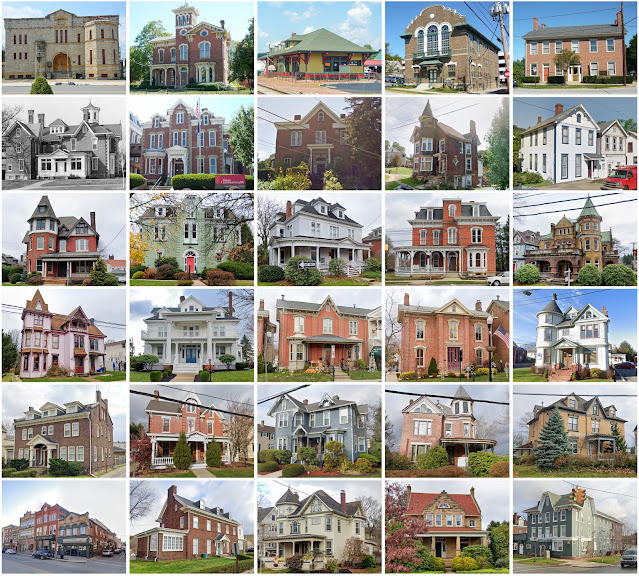Indiana County, Pennsylvania
Founding: 1806 (declared in 1803)
Parent counties: Lycoming and Westmoreland
Namesake: A reference to the 1768 Treaty of Fort Stanwix
Seat: Indiana (1806–)
Seat: Indiana (1806–)
Land area: 827 square miles
Population (2020): 83,246
Population (historic): 6,214 (1810); 20,782 (1840); 36,138 (1870); 42,556 (1900); 75,395 (1930)
Periods of population growth: pre-1810–1920; 1930s; 1960–1980
Subdivisions: 14 boroughs; 11 CDPs; 24 townships
Pre-1940 residences (estimated): 9,984 (25.7%)
Pre-1940 housing survival rate: 54.7%
Pre-1860 housing survival rate (1940): 15.7%
Pre-1940 housing survival rate: 54.7%
Pre-1860 housing survival rate (1940): 15.7%
Farm housing in disrepair (1950): 12.2%
Nonfarm housing in disrepair (1950): 8.8%
Average farmhouse value (1930): $1,537
Average outbuilding value (1930): $1,497
Average farmhouse size (1940): 6.2 rooms
Number of farms (1920): 3,935
Average farm size (1920): 70.6 acres
_________________________________________________________________________________
Average farmhouse value (1930): $1,537
Average outbuilding value (1930): $1,497
Average farmhouse size (1940): 6.2 rooms
Number of farms (1920): 3,935
Average farm size (1920): 70.6 acres
_________________________________________________________________________________
Indiana
Namesake: Indiana County
Founding: 1805 (platting); 1810 (post office); 1816 (incorporation)
Population (2020): 14,044
Population (historic): 317 (1820); 963 (1850); 1,605 (1870); 4,142 (1900); 9,569 (1930)
Periods of population growth: pre-1820–1970; 2010s
Pre-1940 residences (estimated): 1,654 (32.1%)
_________________________________________________________________________________
View and filter the data. Or see a map.
_________________________________________________________________________________
Pre-1940 residences (estimated): 1,654 (32.1%)
_________________________________________________________________________________
View and filter the data. Or see a map.
_________________________________________________________________________________


Comments
Post a Comment